Iprodione
Synonym(s):[3-(3,5-Dichlorophenyl)-2,4-dioxoimidazolidinyl]-N-(methylethyl)carboxamide;Iprodione
- CAS NO.:36734-19-7
- Empirical Formula: C13H13Cl2N3O3
- Molecular Weight: 330.17
- MDL number: MFCD00055353
- EINECS: 253-178-9
- SAFETY DATA SHEET (SDS)
- Update Date: 2025-01-27 09:38:02

What is Iprodione?
The Uses of Iprodione
Iprodione is a non-systemic fungicide that exhibits both protectant and eradicant activities against the spores and mycelium of a number of parasitic fungi. It is effective against Alternaria, Botrytis, Corticium, Fusarium, Helminthosporium, Monilinia, Phoma, Pleiochaeta, Rhizoctonia and Sclerotinia, etc. in nut crops, fruit trees (stone and pome fruit), vines, berries, vegetables, cereals, oilseed rape, cotton and ornamentals. Iprodione also controls various summer and winter turf diseases.
The Uses of Iprodione
Fungicide.
Definition
ChEBI: An imidazolidine-2,4-dione in which the nitrogen at position 1 is substituted by an N-(isopropyl)carboxamide group while that at position 3 is substituted by a 3,5-dichlorophenyl group. A contact fungicide, it blocks the growth of the fu gal mycelium and inhibits the germination of fungal spores. It is used on fruit and vegetable crops affected by various fungal diseases. It is also used as a nematicide.
Production Methods
The synthesis uses 3,5-dichloroaniline which is coupled with glycine and phosgene. The urea substructure is formed by reaction with isopropylamine and phosgene. Many fungicide mixtures with Iprodione are on the market.
Safety Profile
Moderately toxic by ingestion. When heated to decomposition it emits very toxic fumes of NOx and Cl-.
Environmental Fate
Soil. Readily degrades in soil (half-life 20 to 160 days) releasing carbon dioxide 3,5dichloroaniline (Walker, 1987) and (Hartley and Kidd, 1987; Worthing and Hance, 1991). The rate of degradation increases with repeated applications of this fungicide. In a clay loam, the half-life was 1 week. After the second and third applications, the half-lives were 5 and 2 days, respectively (Walker et al., 1986).
Plant. Translocation and uptake by potato plants were reported (Cayley and Hide, 1980). Iprodione is rapidly metabolized in plants to 3,5-dichloroaniline (Cayley and Hide, 1980; Hartley and Kidd, 1987).
Chemical/Physical. In an aqueous solution at pH 8.7, iprodione hydrolyzed to N-(3,5dichloroanilinocarbonyl)-N-(isopropylaminocarbonyl)glycine (Belafdal et al., 1986). At pH 8.7, complete hydrolysis occurred after 14 hours (Cayley and Hide, 1980).
Gomez et al. (1982) studied the pyrolysis of iprodione in an helium atmosphere at 400–1,000°C. Decomposition began at 300°C producing isopropyl isocyanate and 3-(3,5dichlorophenyl)hydantoin. Above 600°C, the hydantoin ring began to decompose forming the following products: 3-chloroaniline, 3,5-dichloroaniline, chlorinated benzenes and benzonitrile. From 800 to 1,000°C, the hydantoin ring was completed destroyed whichled to the formation of aryl isocyanates, anilines and the corresponding diarylureas, namely 3-(3,5-dichlorophenyl)urea and 1-(3-chlorophenyl)-3-(3,5-dichlorophenyl)urea (Gomez et al., 1982).
Metabolic pathway
The opening and rearrangement of the dioxoimidazolidine ring is the initial and major degradation/metabolic reaction for iprodione. Iprodione degrades in soil via cleavage of the dioxoimidazolidine-carboxamide linkage, followed by ring opening to yield 3,5-dichloroaniline and CO2. In plants and animals, primary degradation reactions include N-dealkylation of the isopropyl moiety, ring opening and aryl hydroxylation (Scheme 1).
Degradation
Iprodione (1) is stable in acidic solution (< pH 5) and degraded rapidly
in alkaline solution with DT50 values of 37 days, 1.1 days and 21 min at
pH 5, 7 and 9 at 25 °C, respectively (Melkebeke et al., 1986). Opening
of the oxazolidinedione ring yielded N-(3,5-dichloroanilinocarbonyl)-N-
(isopropylaminocarbonyl)glycine (2) (Belafdal et al., 1986). This reaction
involves the attack of a hydroxyl ion on the carbonyl moiety in the
4-position of the hydantoin ring. Laurent (1974a, 1976a) and Das (1990)
reported the further dehydration/rearrangement of compound 2 to yield
an iprodione isomer (3).
Iprodione degraded readily in water under UV light irradiation
(Laurent, 197413) but was relatively stable when exposed to simulated
sunlight (Adrian and Robles, 1991). The degradation of iprodione in aqueous
solution proceeded via various mechanisms including isomerisation,
dechlorination, hydrolysis and hydroxylation.
Schwack et al. (1995) and Schwack and Bourgeois (1989) reported that
dechlorination was the primary photodegradation reaction when iprodione
in various organic solvents (e.g. isopropanol) was irradiated with
UV light (>280 nm). Other photodegradation reactions included the
replacement of the chlorine atom by the solvent molecule.
Properties of Iprodione
| Melting point: | 130-134 °C(lit.) |
| Density | 1.6223 (rough estimate) |
| vapor pressure | 5 x 10-7 Pa (25 °C) |
| refractive index | 1.6140 (estimate) |
| Flash point: | 2 °C |
| storage temp. | Sealed in dry,Room Temperature |
| solubility | DMSO: 100 mg/mL (302.87 mM) |
| form | neat |
| pka | 9.19±0.20(Predicted) |
| form | Solid |
| color | White to off-white |
| Water Solubility | 0.0013 g/100 mL |
| Merck | 13,5096 |
| BRN | 895003 |
| CAS DataBase Reference | 36734-19-7(CAS DataBase Reference) |
| NIST Chemistry Reference | Iprodione(36734-19-7) |
| EPA Substance Registry System | Iprodione (36734-19-7) |
Safety information for Iprodione
| Signal word | Warning |
| Pictogram(s) |
 Health Hazard GHS08  Environment GHS09 |
| GHS Hazard Statements |
H351:Carcinogenicity H410:Hazardous to the aquatic environment, long-term hazard |
| Precautionary Statement Codes |
P202:Do not handle until all safety precautions have been read and understood. P273:Avoid release to the environment. P280:Wear protective gloves/protective clothing/eye protection/face protection. P391:Collect spillage. Hazardous to the aquatic environment P308+P313:IF exposed or concerned: Get medical advice/attention. P405:Store locked up. |
Computed Descriptors for Iprodione
New Products
1-Boc-4-cyanopiperidine tert-Butyl carbazate 1-(TERT-BUTOXYCARBONYL)-2-PYRROLIDINONE TETRABUTYLAMMONIUM CYANIDE TETRAHYDRO-2H-PYRAN-3-OL 3-Pyridineacrylic acid Nickel(II) perchlorate hexahydrate, 98% 4-Bromophenylacetonitrile, 95% 3-Bromo-4-fluoroaniline, 97% Sodium tetraborate decahydrate, 98% Palladium(II) acetate, trimer, Pd 99% 4-Bromo-2-chlorotoluene, 97% Tadalafil Clopidogrel bisulfate Sitagliptin Phosphate Monohydrate Cabergoline Fexofinadine HCl Etoricoxib 4-Amino Acetophenone 2-Chloro Acetophenone Amlodipine Base 2,3,5-Triiodobenzoic Acid Pyrrolidine Diiodo PentoxideRelated products of tetrahydrofuran


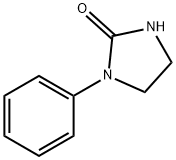
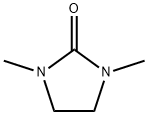
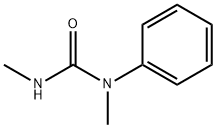
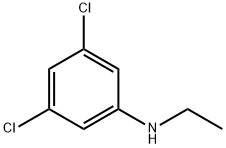
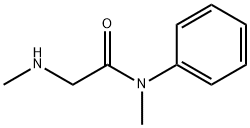

You may like
-
 Iprodione >98% (HPLC) CAS 36734-19-7View Details
Iprodione >98% (HPLC) CAS 36734-19-7View Details
36734-19-7 -
![[3-(3,5-Dichlorophenyl)-2,4-dioxoimidazolidinyl]-N-(methylethyl)carboxamide CAS 36734-19-7](https://img.chemicalbook.in//Content/image/CP5.jpg) [3-(3,5-Dichlorophenyl)-2,4-dioxoimidazolidinyl]-N-(methylethyl)carboxamide CAS 36734-19-7View Details
[3-(3,5-Dichlorophenyl)-2,4-dioxoimidazolidinyl]-N-(methylethyl)carboxamide CAS 36734-19-7View Details
36734-19-7 -
 Iprodione CAS 36734-19-7View Details
Iprodione CAS 36734-19-7View Details
36734-19-7 -
 Iprodione CAS 36734-19-7View Details
Iprodione CAS 36734-19-7View Details
36734-19-7 -
 366789-02-8 Riveroxaban 98%View Details
366789-02-8 Riveroxaban 98%View Details
366789-02-8 -
 Carvedilol 98%View Details
Carvedilol 98%View Details
72956-09-3 -
 73590-58-6 Omeprazole 98%View Details
73590-58-6 Omeprazole 98%View Details
73590-58-6 -
 Sertraline HCl 98%View Details
Sertraline HCl 98%View Details
79559-97-0
